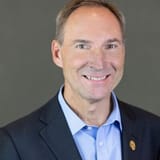Gary Bolton: Satellite’s Polite Conceit of Unserved/Underserved
It remains to be seen if Starlink services will have a large-scale detrimental impact on rural service providers.
Gary Bolton

“You keep using that word. I do not think it means what you think it means.” – Inigo Montoya, The Princess Bride
SpaceX Starlink is the latest satellite broadband project to invoke the needs of unserved and underserved consumers to justify Federal Communications Commissions (FCC) licensing. The polite fiction spun by it and other satellite companies, nurtured by today’s short-form news cycle, is that such networks will deliver broadband services to anyone who needs them.
However, a less liberal appraisal recognizes these multi-billion dollar capital-intensive efforts are dependent upon business and government customers for economic survival and will deliver services only to those who can best afford them.
The marketing conceit of “broadband for all” is not new and dates back more than a decade to the launch of the O3b mPower satellite constellation, with “O3b” standing for the “Other three billion” in the world that didn’t have broadband internet. Over the years, the company delivered services to the Cook Islands, Pakistan, and Nigeria along with four of the five major cruise lines fleet, NOAA, and the Department of Defense, listing verticals such as telcos and MNOs, governments, energy and mining companies, cruise and commercial maritime, enterprise, and aviation.
More recently, SES has partnered with Microsoft to deliver Azure Cloud access anywhere in the world, but there are no clear statistics on how many of the other three billion O3b has added to the internet.
“Our vision can change the lives of billions: almost half the entire human population is not yet connected,” OneWeb claims, but its targeted customers are maritime, aviation, enterprise, and government, with 5G worked in for good measure. There’s no clearly articulated path on how selling to big businesses translates into affordable access for billions of unserved and underserved people.
“Because that’s where the money is,” Willie Sutton, bank robber, once stated.
SpaceX executives believe the Starlink network could bring in as much as $30 billion a year, cash the company will use to fund Elon Musk’s ambition to colonize Mars. The company’s March 5, 2021, FCC filing requesting a blanket license for “earth stations in motion” (ESIM) focused on the company’s ability to deliver broadband services to large vehicles, ships and aircraft – going after the same government, maritime, and aviation sectors as O3b and OneWeb.
A week earlier, PC Mag expressed “concern” that urban Starlink deployments would take up satellite capacity “for the rural users who really need it. Starlink will have to manage its signups smartly.” Other publications have repeated the premise that Starlink’s reason for existence is to provide service to the unserved/underserved, so there’s no reason to worry about satellite affecting planned greenfield fiber deployments or network upgrades.
The cold truth is SpaceX is out to make money, so it’s going to sign up as many customers as can best afford the service and prioritize customers bringing in higher revenues such as enterprise, governments, and verticals. Revenue management is the name of the game, not rural users who need it. It is the same business template O3b and OneWeb are following today and Telesat and Amazon will in the future.
Satellite services provide both good and bad aspects for underserved/unserved geographics. In some clear cases, satellite will be the most cost-effective way to deliver broadband to rural locations because the local phone or cable company cannot economically provide a viable alternative. Higher-speed services such as Starlink should also serve as a competitive stimulus for rural incumbents to upgrade networks on a more proactive basis than simply “milking the asset” until things break or customers start leaving to other options.
It remains to be seen if Starlink services will have a large-scale detrimental impact on rural service providers and will depend the concentration of Starlink customers within a specific geographic area. One or two customers picking up satellite services is unlikely to influence fiber buildout or network upgrade plans, but 10 or more most certainly could, especially if some of those customers are local business and government purchasers.
Gary Bolton serves as president and CEO of the Fiber Broadband Association — the largest trade association in the Americas dedicated to all-fiber-optic broadband. With more than three decades in the telecom industry, Bolton has been highly involved in Washington, particularly on FCC and Congressional proceedings and international trade issues. He holds an MBA from Duke University and a BS in Electrical Engineering from North Carolina State University. This piece is exclusive to Broadband Breakfast.
Broadband Breakfast accepts commentary from informed observers of the broadband scene. Please send pieces to commentary@breakfast.media. The views expressed in Expert Opinion pieces do not necessarily reflect the views of Broadband Breakfast and Breakfast Media LLC.









Member discussion